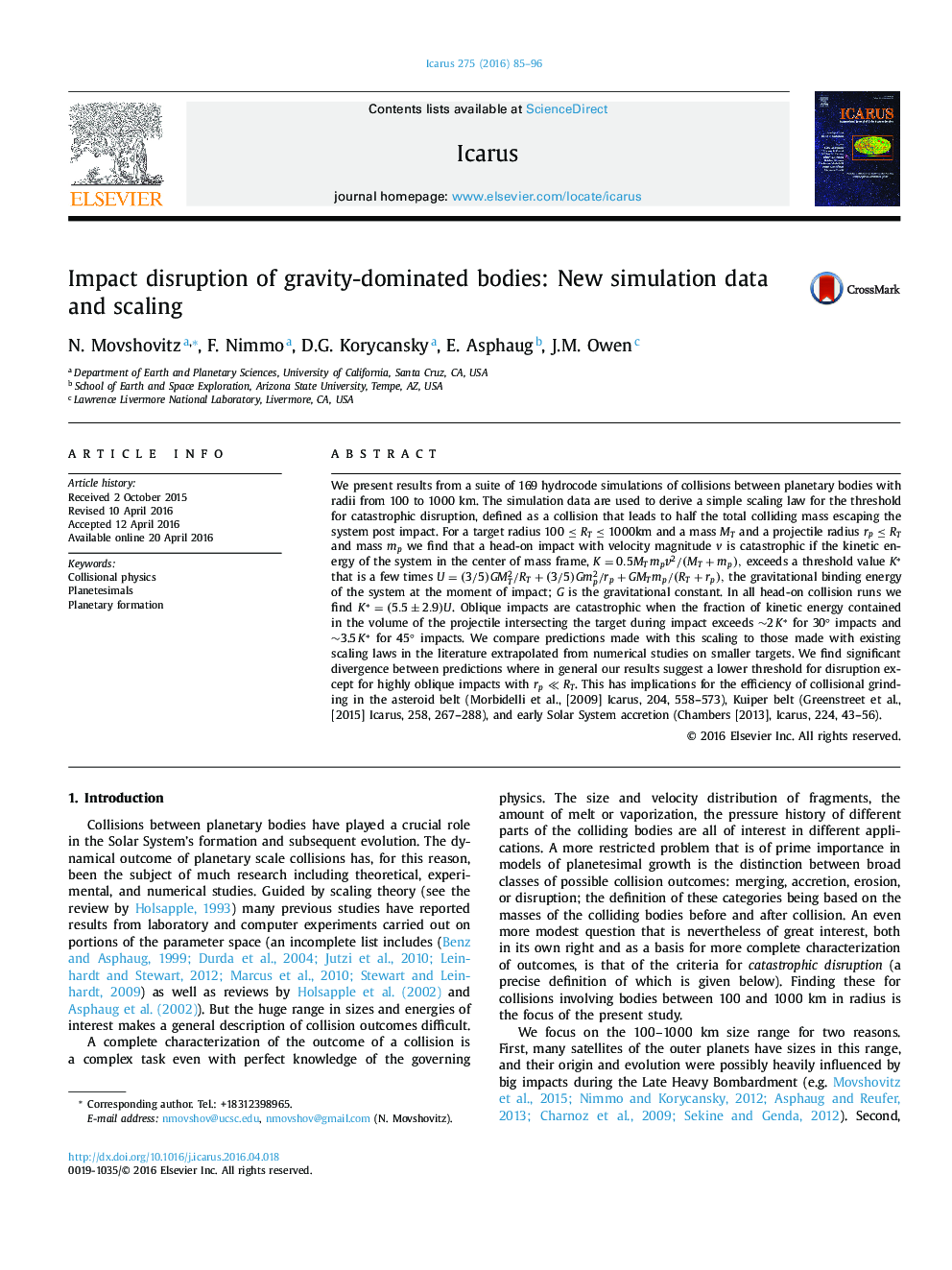| Article ID | Journal | Published Year | Pages | File Type |
|---|---|---|---|---|
| 8134921 | Icarus | 2016 | 12 Pages |
Abstract
We present results from a suite of 169 hydrocode simulations of collisions between planetary bodies with radii from 100 to 1000 km. The simulation data are used to derive a simple scaling law for the threshold for catastrophic disruption, defined as a collision that leads to half the total colliding mass escaping the system post impact. For a target radius 100 ⤠RT ⤠1000km and a mass MT and a projectile radius rp ⤠RT and mass mp we find that a head-on impact with velocity magnitude v is catastrophic if the kinetic energy of the system in the center of mass frame, K=0.5MTmpv2/(MT+mp), exceeds a threshold value K* that is a few times U=(3/5)GMT2/RT+(3/5)Gmp2/rp+GMTmp/(RT+rp), the gravitational binding energy of the system at the moment of impact; G is the gravitational constant. In all head-on collision runs we find K*=(5.5±2.9)U. Oblique impacts are catastrophic when the fraction of kinetic energy contained in the volume of the projectile intersecting the target during impact exceeds â¼2âK* for 30° impacts and â¼3.5âK* for 45° impacts. We compare predictions made with this scaling to those made with existing scaling laws in the literature extrapolated from numerical studies on smaller targets. We find significant divergence between predictions where in general our results suggest a lower threshold for disruption except for highly oblique impacts with rp ⪠RT. This has implications for the efficiency of collisional grinding in the asteroid belt (Morbidelli et al., [2009] Icarus, 204, 558-573), Kuiper belt (Greenstreet et al., [2015] Icarus, 258, 267-288), and early Solar System accretion (Chambers [2013], Icarus, 224, 43-56).
Related Topics
Physical Sciences and Engineering
Earth and Planetary Sciences
Space and Planetary Science
Authors
N. Movshovitz, F. Nimmo, D.G. Korycansky, E. Asphaug, J.M. Owen,
